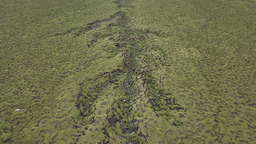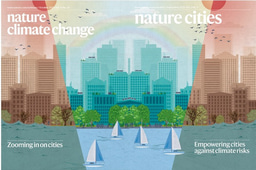COVID, climate and economic recovery are a family affair
Published in Sustainability

The effects of lockdown have been felt very unequally across societies and they have highlighted existing inequalities. But some professors and their families had it relatively easy. For dad Piers, major international climate research meetings were rescheduled or moved online, while daughter Harriet saw her A-level exams cancelled.
Piers and Harriet decided to find out what the impact of lockdown on the climate really was, planning a father-and-daughter collaboration which has led, with a little help from colleagues in the climate science community, to a new publication that points us towards a greener and more resilient future.
As many greenhouse gases, including carbon dioxide, are notoriously hard to measure in real time, the Forsters had to find an alternative way of tracking emissions that could also be carried out entirely from home – no big meetings, lab experiments or high-powered computers needed.
The lightbulb moment came when Google and Apple announced that they would, for the first time, release mobility reports. These were aimed at helping public health officials understand how lockdown restrictions were affecting people’s behaviour, but Piers and Harriet realised that the data could show a lot more - it could also be used to reflect emissions changes in the sectors covered by the data.
In other words, if we know which pollutants a sector usually emits, along with how much, we can use changing activity levels as a mirror for emissions changes.
Bringing in a wider team, the study ultimately grew into an assessment of changes in the emissions of 10 different pollutants, covering 123 countries responsible for 99% of global CO2 emissions, between February and June 2020.
.png)
The changing activity and emissions levels were clear, but what did they really mean for the global challenge of tackling climate change?
Next steps were twofold: firstly, to find out how the emissions changes would affect global temperatures; and secondly to see how these insights could help inform decision making.
The initial findings were stark: despite the sudden and obvious emissions reduction, there would only be a tiny impact - a fall of 0.01˚C – on predicted global temperatures. So even the massive behaviour change we saw across the globe during lockdown wasn’t enough to make a serious dent in our efforts to tackle climate change, mainly because the fall in emissions is only expected to be temporary, lasting two years at most.
There is better news though. Looking at a range of options for economic recovery, and the emissions that come with them, showed that making the right choices, including structural economic changes, could halve the amount of warming we can expect between now and mid-century, giving us the chance to avoid dangerous climate change. The challenge now is to make this happen, setting and delivering against ambitious targets to reduce emissions to net-zero by 2050.
In the meantime, Harriet is looking forward to starting her art foundation course in London with a Nature Climate Change publication under her belt, although Piers is still working on climate science at the kitchen table, perhaps inventing more uses for Apple and Google’s data as he does so. Watch this space!
The paper Current and future global climate impacts resulting from COVID-19 is published in Nature Climate Change on 07 August 2020. (DOI: 10.1038/s41558-020-0883-0).
Follow the Topic
-
Nature Climate Change

A monthly journal dedicated to publishing the most significant and cutting-edge research on the nature, underlying causes or impacts of global climate change and its implications for the economy, policy and the world at large.



Please sign in or register for FREE
If you are a registered user on Research Communities by Springer Nature, please sign in